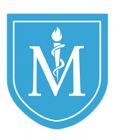Suicide
Hidden Risk Factors in Youth Suicide
Research targets risk factors and interventions for kids at risk for suicide.
Posted December 3, 2019 Reviewed by Abigail Fagan
With rates of suicide attempts and suicide completions drastically rising for children and adolescents, we need to better understand and recognize hidden risk factors that increase suicidal thoughts and behaviors in youth and to develop new interventions.
The Center for Disease Control and Prevention (CDC) reports that suicide is now the second leading cause of death for those between ages 10 to 17. Ten years ago, suicide was the fourth leading cause of death for this age group.
Hidden Risk Factors

Anxiety is the most common mental illness in the United States, and about 32% of adolescents have at least one anxiety disorder. Individuals with anxiety are 10 times more likely to engage in suicide-related behaviors compared to the general population. Social anxiety symptoms, like social isolation and worry, are especially prevalent in youth. Children with anxiety disorders often have difficulties in social and interpersonal functioning, which can lead to negative self-talk, which, in turn, can lead to suicide-related behaviors.
Although we often focus on depression as the sign that should prompt us to ask about potential suicidal thoughts, anxiety is a common risk factor that has been linked to suicide and should not be overlooked.
Poor Sleep
Sleep problems contribute to many different health issues, including depression, anxiety, and heart problems. One study found that children with greater anxiety symptoms have an increased risk of suicidal ideation later in life especially if they report more sleep problems. Additionally, these sleep disturbances can lead to greater anxiety symptoms or even new symptoms over time (e.g., depression symptoms).
Mental health providers may want to consider implementing sleep assessments in conjunction with suicide risk assessments, particularly as research shows that sleep problems are one of the strongest predictors of suicide. Treatment methods targeting sleep disturbances, such as cognitive-behavioral therapy for insomnia (CBT-I), have been shown to be effective for reducing poor sleep as well as helping individuals with anxiety disorders.
Violence
When adolescents are the victims or perpetrators of violence, they are at an increased risk for engaging in suicide-related behaviors, especially suicide attempts and completions. Interpersonal violence exposure may increase suicide capability because individuals are more accustomed to the fear of death or an increased pain tolerance. Those who are both victims and participators (e.g., bullying-victims) are at an even higher risk compared to adolescents who are only victims of or participate in interpersonal violence.
Mental health providers who work with individuals or communities that have high rates of exposure to violence (e.g., juvenile justice systems, trauma-focused agencies) should be especially aware of this risk factor when performing suicide risk assessments.
Interventions for High-Risk Children and Adolescents
Safety Planning
Safety planning is a brief intervention that focuses on potential coping strategies and supportive personal and professional contacts that can be used during a suicidal crisis; it has been shown to be effective in reducing suicide-related behaviors. There are six steps involved in developing an individual’s safety plan:
- Identify personal warning signs (e.g., personal situations, thoughts, images, behaviors)
- Use internal coping strategies (e.g., exercising, drawing)
- Utilize social settings/people to provide distraction or increase resiliency (e.g., places of worship, department stores, local interest groups)
- Contact trusted individuals (e.g., family, friends)
- Contact mental health professionals or agencies (e.g., current mental health providers, the National Suicide Prevention Hotline)
- Make the immediate environment safe (e.g., remove any lethal objects from the immediate surroundings)
Collaborative Assessment and Management of Suicide (CAMS)
CAMS is a suicide-specific therapeutic framework that emphasizes having the patient define their own “suicidal drivers,” which are then targeted and treated over the course of clinical care. CAMS has been shown to quickly reduce suicidal ideation in six to eight sessions, decrease depression, and increase hope while decreasing hopelessness. Adapting this treatment for children and adolescents (i.e., “CAMS-4Kids” and “CAMS-4Teens”) is currently being developed. The child version of CAMS must be broken down and explained to the child in a way they can understand.
In addition to safety planning and CAMS, there are other evidence-based treatments for reducing suicide risk in children and adolescents:
- Attachment-based Family Therapy (ABFT)
- Cognitive Behavioral Therapy for Suicide Prevention (CBT-SP)
- Dialectical Behavioral Therapy for Adolescents (DBT-A)
- Interpersonal Psychotherapy for Adolescents (IPT-A)
- Mentalization-based Therapy for Adolescents (MBT-A)
- Combination of different treatments – like Safe Alternatives for Teens and Youths (SAFETY), a program that combines DBT and CBT
Being able to recognize hidden risk factors that can lead to these thoughts and behaviors and using effective intervention methods to target them can be a major step in bringing down the rising suicide rates within this age group.
For those in crisis or in need of immediate help, we recommend contacting the National Suicide Prevention Lifeline (1-800-273-TALK or their online chat system) or the Crisis Text Line (text HOME to 741741), which are available 24 hours a day.
Authors
Tiffany Tran is a research assistant at The Menninger Clinic. Her research interests include children, adolescents, and family dynamics and relationships.
Katrina Rufino, Ph.D. completed a fellowship in suicide studies at the Menninger Clinic where she continues as a data scientist. She is an associate professor at the University of Houston–Downtown.
Michelle Patriquin, Ph.D., ABPP is board certified in clinical child and adolescent psychology and is the Director of Research Operations at The Menninger Clinic. She is an assistant professor in the Menninger Department of Psychiatry & Behavioral Sciences at Baylor College of Medicine.




